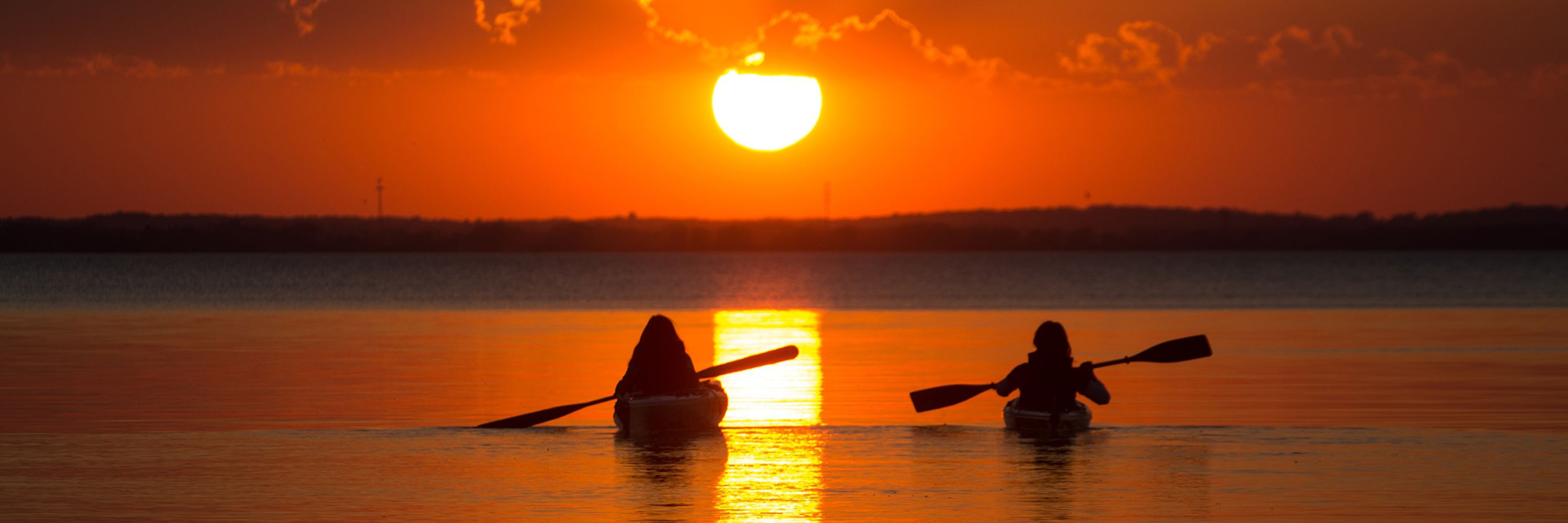
Top Ten Places to Live in the USA
Trying to find the right place to move to is an important decision. There are lots of factors to keep in mind, such as cost of living, job opportunities, safety, culture, and recreational activities. Only you can know which place is best for you, but for some ideas on where to live, here are the top ten most highly ranked places to live in the U.S.
10. Fayetteville, Arkansas
Fayetteville has transformed from a small town to a hub of higher education, culture, and entrepreneurism, all while maintaining its friendliness. The surrounding Ozark Mountains makes a beautiful landscape and offers lots of recreational opportunities for outdoor enthusiasts. There are state parks, trails, playgrounds, and community green spaces. Here, residents take two things seriously: the arts and football. Fayetteville has a first-class performing arts center, several festivals, and live music venues. When the local college football team plays, crowds pour into the University of Arkansas' stadium to attend the game.
Fayetteville has a healthier job market than other similarly-sized metros, and their key industries include manufacturing and education. Fayetteville has a long history with manufacturing, and major sectors include automotive, tool-making, and food production. Fayetteville has a higher crime rate than the national average, and the cost of living is 9% lower than the national average.
Another fun fact: this area is known as the birthplace of Walmart.
9. Colorado Springs, Colorado
Against the backdrop of Pike’s Peak, Colorado Springs brings metropolis and nature together. This beautiful city is home to the U.S. Olympic and Paralympic training centers along with many locals who enjoy exercise and outdoor activities—Colorado Springs offers an abundance of trails for hiking and mountain biking. Some of the major attractions include Pike’s Peak (of course), Garden of the Gods, Cheyenne Mountain Zoo, and the Cave of the Winds.
Colorado Springs has a solid job market with key industries in aerospace & defense, manufacturing, cybersecurity, and finance. Despite the strong military presence in Colorado Springs, its crime rate is higher than the national average. The cost of living is 8% higher than the national average.
8. Charlotte, North Carolina
Charlotte is a friendly town with a big city skyline and four beautiful seasons. Fall is especially gorgeous in Charlotte with all the trees changing colors, and the winter is pretty mild. In Charlotte, you’ll get a mix of southern hospitality with innovation and forward-thinking. Charlotte has recently become the hotspot for technology and finance. It is the second largest banking center in the country, making finance an important industry in Charlotte. Banking, manufacturing, automotive, and energy are some of their biggest industries. Charlotte has a strong job market and is projected to add more than 300,000 more jobs by the end of 2028.
Charlotte is also one of the cleanest cities in the country according to multiple rankings. Activities include going to the Carowinds amusement park, exploring museums, shopping, going to breweries, and attending sports games at the local stadiums. There are also two lakes on either side of Charlotte that take less than an hour to drive to. The cost of living is 2% below the national average, but the rate of crime is higher than the national average.
7. Portland, Maine
With cobblestone roads and oceanfront views, Portland (Maine) maintains a certain small-town charm while boasting a fun nightlife, terrific food, lots of shopping, and a healthy amount of tourism. In the summer, you enjoy the beaches and the waterfront. Yes, the winters are snowy and can easily get down to below 20°F, but you’ll enjoy more mild summers with temperatures in the 70s. Portland offers both great food and great art. It’s been dubbed “Restaurant City of the Year”, so you’ll be sure to find delicious restaurants. You can enjoy the Arts District full of work by talented artists, take a stroll down the classic cobblestone roads in Old Port, go on a hike, or enjoy a day out sailing.
Portland has a solid public school education system. It has a healthy job market with key industries of trade, transportation & utilities, health services, government, and education. Portland has a lower-than-average crime rate, but it’s cost of living is 15% above the national average and the median income is a bit lower than the national average.
6. Naples, Florida
Naples is a beautiful place with a gorgeous downtown and several picturesque beaches. Downtown, you’ll find high-end shopping, boutiques, and independent labels, along with five-star dining establishments and delicious cafes and bistros. Naples also boasts beaches of white sand and shockingly blue waters. Naples hosts several events and festivals; some of the most popular include festivals for Craft Beer, Stone Crab, Shakespeare, Winter Wine, and National Arts.
While Naples has a lot of retirees, it has an excellent public school system and is a safe city with a very low crime rate, making it a good place to raise a family. The top industries in Naples include tourism, healthcare, and construction; the city has a booming job market. However, the gorgeous Naples is considered one of the wealthiest cities in America with a cost of living that is 72% higher than the national average.
5. Sarasota, Florida
Warm and sunny, Sarasota is a beautiful town with several white sand beaches, including the famous Siesta Key Beach. Because Sarasota faces the Gulf of Mexico, the water is calmer and warmer than the beaches of the Atlantic Ocean. Along with having one of the most beautiful beaches in Florida, Sarasota is a thriving performing arts and culture hub. There’s art all around the town, art museums, several performing halls, and lots of festivals. Because it’s warm year-round, there are also plenty of outdoor activities to enjoy, from boating and kayaking to biking and pickleball. The downside to living in such a beautiful place is that there are always lots of tourists.
As far as safety is concerned, Sarasota’s average property crime and violent crime rates are both lower than the national average. The top industries in Sarasota include tourism & hospitality, life sciences, infotech, and clean tech. Sarasota has no state income tax, but the cost of living is 6% higher than the national average.
4. Boulder, Colorado
With the backdrop of the Rocky Mountains, Boulder is a beautiful city offering a haven to nature lovers. The city holds more than 60 parks and 300 miles of bike lanes, routes, and trails. It provides easy access to mountains, forests, and rivers and has opportunities for rock climbing, horseback riding, river rafting, sledding, and even hot air ballooning. Outside of outdoorsy activities, Boulder has great food with its world-class restaurants, bars, and cafes. Boulder is 25 minutes away from Denver and an hour and a half from top ski resorts.
The violent crime-rate in Boulder is lower than the national average, but the property-crime rate is higher than the average. Boulder has a healthier job market than similarly sized areas, with key industries in aerospace, outdoor recreation, technology, and natural products. However, like Naples, Boulder does not come cheaply. The cost of living is 67.4% higher than the national average with a median home price of $880K.
3. Raleigh-Durham, North Carolina
With a great economy and culture, Raleigh-Durham is becoming an increasingly popular place to live. Raleigh and Durham are actually two separate cities, but since they’re so close to each other, they’re often grouped together. Raleigh and Durham are also known as the Research Triangle hub, and the region is one of the nation’s fastest growing economies. They attract big tech companies (such as Apple and Google) as well as a lot of start-ups. In additional to tech-heavy jobs, Durham has over 500 life sciences companies and as the capitol of North Carolina, Raleigh houses many state agencies. Raleigh has the fifth best job market in the United States and the cost of living is on par with the national average. The violent crime-rate is lower than the national average, but the property-crime rate is higher than the average.
In addition to a bustling job market, Raleigh-Durham also boasts robust culture and entertainment. You can enjoy the NC opera, the Carolina Ballet, the NC symphony, or Broadway shows at the Durham Preforming Arts Center. There are museums, event centers, and great food. If you prefer the more outdoorsy activities, Eno State River Park just outside of Durham is known for camping, paddling, and fishing. At Pullen Park in Raleigh, you can rent a paddle-boat, ride a carousel, or go swimming. To top it all off, Raleigh-Durham are within an afternoon’s drive to the mountains or the beaches.
2. Huntsville, Alabama
In Huntsville, southern hospitality meets innovation. Thanks to the space race of the 1960s, a large part of the population still works in engineering and defense. However, there’s certainly more to do in Huntsville than building rockets. Huntsville’s downtown boasts two arts & entertainment districts with pubs, bars, music halls, lounges, and more. Huntsville also has great food—a lot of it comes from local farmers providing fresh ingredients—and the city offers a lot of variety in cuisine.
Huntsville has a lower crime rate than other metro areas, but it isn’t one of the safest places to live in America. Some of the major job industries in Huntsville include military, aerospace & defense, medical, education, aeronautics, telecommunications, and local government. Huntsville’s cost of living is 8% lower than the national average.
1. Green Bay, Wisconsin
Sure, you’ve heard of the Green Bay Packers, but Green Bay, Wisconsin has more to offer than an NFL team. As the number one best-ranked place to live, Green Bay blends the resources of a city with the charm of a nice Midwest town. Green Bay sports boutiques, museums, two college campuses, and the Fox River which allows for riverfront dining and watersports. To make it even better, Green Bay’s cost of living is 10% lower than the national average.
As far as safety is concerned, Green Bay is much safer than other metropolitan areas, but it is less safe than the average American neighborhood. Green Bay has strong employment opportunities and was ranked one of the top five metropolitans for providing high-paying jobs. While there are many job opportunities, the key industries in Green Bay include transportation & logistics, manufacturing, paper & packaging, healthcare, and education.
And there you have it: these are currently the top-ranked cities to live in. Whether or not you decide to move to one of these places, hopefully this list will help give you a better idea of what you want moving forward. Good luck!
Get In Touch If you're interested in improving your life through homeownership, please provide your contact information below and a Loan Officer will be in contact. |
|
|

